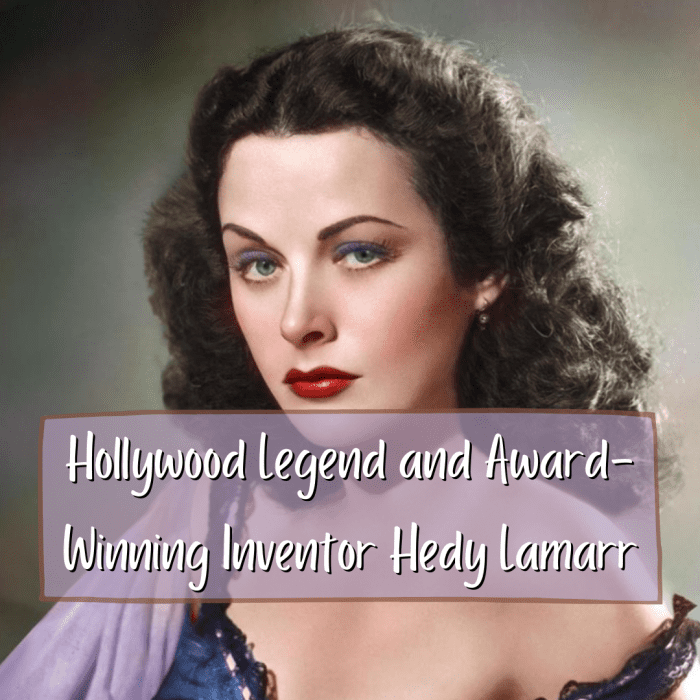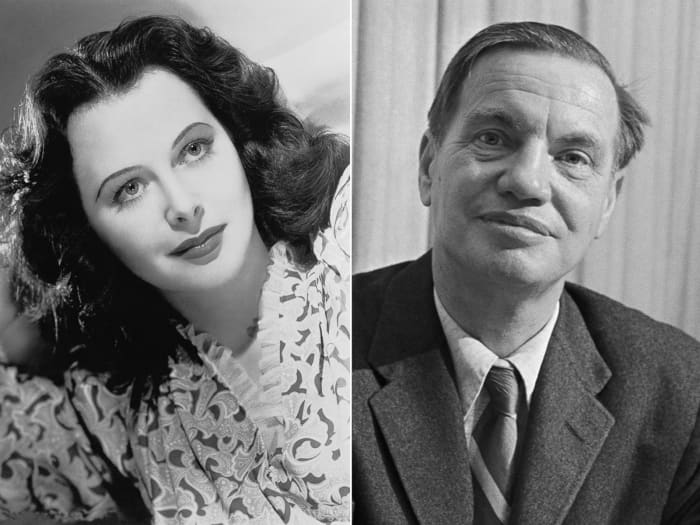Hollywood Legend and Award-Winning Inventor Hedy Lamarr

Read on to learn all about Hedy Lamarr, Hollywood legend and important inventor. Her co-invention of a method for spreading spectrum communications earned her the nickname of “the mother of Wi-Fi."
Hedy Lamarr
Who Was Hedy Lamarr?
Hedy Lamarr was often referred to as “The Most Beautiful Woman in Film.” Her looks and powerful screen presence made her one of the most sought-after actresses during her career. Lamarr was known for being just as intelligent as she was beautiful.
Her co-invention of spreading spectrum communications was the basis for secure military communication, mobile phone technology, and more. Her impressive acting career and her technological achievements made her one of the most talented and intelligent people to ever be in the movie industry.
Early Life
Hedwig Eva Maria Kiesler was born in Vienna, Austria-Hungary, in 1914. Her father’s name was Emil Kiesler, and her mother was named Gertrud “Trude” Kiesler. Lamarr’s father was a bank manager and was from Lviv, Ukraine.
Her mother was born in Budapest, Hungary, and was a pianist. When she was a child, Lamarr was interested in acting and was fascinated with both film and theatre. She won a beauty contest in Vienna, Austria, at the age of 12.
Acting
When Lamarr was young, she started taking acting classes. She forged a permission slip from her mother one day to get out of school. Lamarr then went to watch the Sascha-Film company make movies. She was noticed and hired as a script girl. When she was 16, Lamarr was given a part as an extra in the 1930 movie Money on the Street.
She then had a small speaking part in the 1931 movie Water Glass. After meeting theatre producer Alexis Granowsky, she was cast in the 1931 movie The Trunks of Mr. O.F. She got her first leading role in the 1932 movie No Money Needed.
International Fame
At 18, Lamarr won the role of a neglected young wife married to an indifferent older man in the 1931 movie Ecstasy. The film became as notorious as it was celebrated for showing Lamarr’s face while experiencing an orgasm. According to those who were there during the filming, the expression on Lamarr’s face resulted from someone sticking her with a pin.
She was also featured in brief nude scenes as well as close-ups. After the filming was completed, she discovered the nude shots were done by the director and producer using high-powered telephoto lenses. Ecstasy obtained worldwide recognition and notoriety from Lamarr’s role in the film. The film was popular in Europe but was banned in the United States. She won an award in Rome for her work in the movie.
Marriage
After the movie Ecstasy became an international sensation, Lamarr had many men pursue her romantically. The one obsessed with getting to know her the most was named Friedrich Mandl. His Viennese company manufactured munitions. Mandl was the third-richest man in all of Austria. Lamarr fell for his charm and was overwhelmed with his wealth. Her parents were Jewish and did not approve of Mandl and his support of Benito Mussolini and Adolf Hitler.
Lamarr married Mandl on August 10, 1933. He was 33, and Lamarr was 18. Mandl demanded she convert to Catholicism before they got married. Lamarr soon discovered he was very controlling. He objected to her acting in the movie Ecstasy, especially the simulated orgasm scene. Lamarr soon felt she was a prisoner in Mandl’s castle home.
Marriage Escape
Lamarr's marriage quickly became unbearable for her. She decided to leave her husband and country. One day, Lamarr disguised herself as a maid and fled to Paris. She knew acting in movies would not be possible with Mandl as her husband. Lamarr felt he treated her as a doll. Others felt Mandl treated Lamarr as an object that had to be guarded. He expected her to have no mind or life of her own.
MGM
In 1937, Lamarr arrived in London. She met with the head of MGM, Louis B. Mayer. During this time, he was in Europe looking for talent. She booked herself onto the same New York-bound ship as Mayer. Lamarr impressed Mayer enough that he offered her a $500-a-week contract during the trip.
Recommended
Her name at the time was Hedwig Kiesler, and Mayer talked her into changing her name. He wanted Lamarr to distance herself from being the “Ecstasy Lady.” She changed her name to Lamarr after the silent movie actress Barbara La Marr.
Promotion
Lamarr went to Hollywood in 1938 with Mayer. He started promoting Lamarr as the most beautiful woman in the world. She was soon in the 1938 movie Algiers. It was a national sensation. Lamarr was billed as an unknown Austrian actress, and this created a high degree of anticipation in movie audiences. She soon became typecast as a glamorous and exotic seductress.
Popular Movies
Lamarr starred in the 1940 film Boom Town with Clark Gable and starred again with Gable in another 1940 film called Comrade X. She worked with James Stewart in the 1941 film Come Live with Me.
She was in the 1941 movie H.M. Pulham, Esq and the 1942 box office hit Tortilla Flat. She also starred in another 1942 hit, Crossroads, with William Powell. During her 28-year film career, she appeared in over 30 movies.
Personality
Lamarr's personality off-screen was very different from her on-screen image. During this time, she often felt homesick and lonely. She would swim in a pool at her agent's home but didn't like to go to beaches or deal with crowds. When Lamarr was asked for an autograph, she was confused as to why anybody would want it. Lamarr would often talk about herself in the third person.
Wartime Fundraising
Lamarr worked with a sailor named Eddie Rhodes in a war bond selling campaign. Each time Lamarr would make an appearance, Rhodes would be in the crowd. She would point him out and ask him to come up on stage with her. Lamarr would flirt with him and ask the crowd if she should kiss him. The crowd would yell “yes.” Lamarr would then tell the crowd if they purchased enough war bonds, she would give Rhodes a kiss.
When enough war bonds were purchased, she kissed Rhodes. He would then go back into the audience. They did this at many bond rallies, and Lamarr sold over $24 million worth of war bonds.
Marriage
Lamarr was married six times. In 1939, during her second marriage to Gene Markey, she adopted a son named James. She had two biological children with her third husband, actor John Loder. Their children were named Denise, born in 1945, and Anthony, born in 1947.
Inventor
In her spare time, Lamarr would spend time with hobbies but mostly on her inventions. She was recognized by Howard Hughes for her suggestion that he make his planes more streamlined. She felt their square design made them slow. Hughes and Lamarr dated for a short time. He was very supportive of her ideas for inventions.
Mother of Wi-Fi
During World War II, radio-controlled torpedoes were an increasingly popular technology in naval warfare. They had a problem. The torpedoes could be jammed and set off course. Lamarr had an idea of a frequency-hopping signal. One that would not be able to be jammed or tracked.
Lamarr explained her idea to George Antheil who was a pianist and composer. Antheil and Lamar worked together to develop a device that synchronized radio signals. They drafted designs for the frequency-hopping system and received a patent for it. The US Navy found it too difficult to implement. Their invention was eventually used by the Navy in 1957 to develop a sonobuoy.
An updated version of their design was installed on Navy Ships in 1962. Today, frequency-hopping spectrum technology is used with Wi-Fi as well as Bluetooth technology. Some people have referred to Lamarr as “the mother of Wi-Fi.”
Science Awards
The success of her invention was acknowledged later in life. In 1997, she and Antheil were awarded the Pioneer Award by the Electronic Foundation. Lamarr was also the first female to be awarded the Bulbie Gnass Spirit of Achievement Award from the Invention Convention. She was posthumously inducted into the National Inventors Hall of Fame in 2014.
Seclusion
During the final decades of her life, Lamarr lived in seclusion and only communicated with the outside world by telephone. Many believe it was because Lamarr was the victim of a bad plastic surgery operation. She only would use the telephone to speak with her children and close friends.










